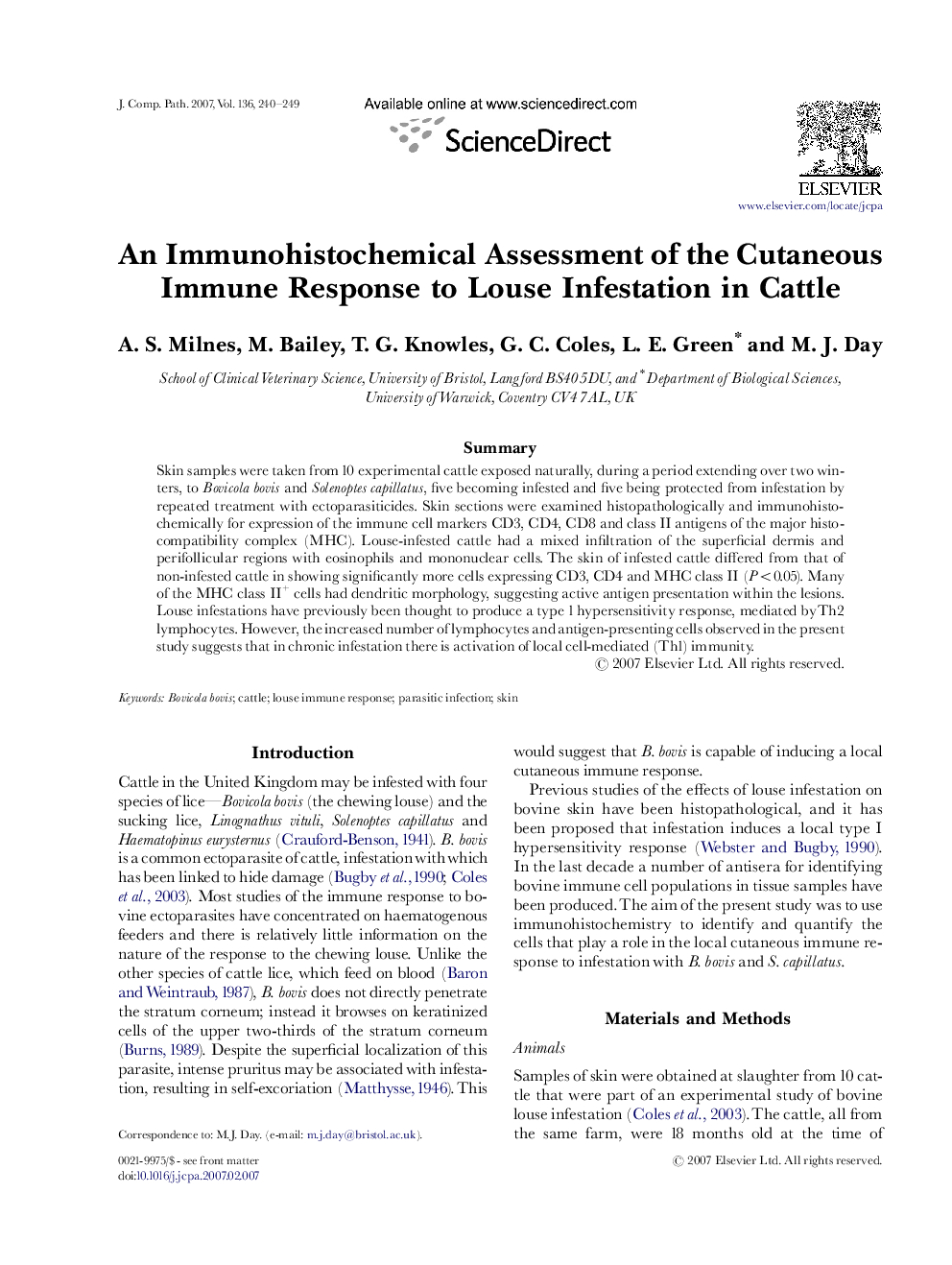| Article ID | Journal | Published Year | Pages | File Type |
|---|---|---|---|---|
| 2438724 | Journal of Comparative Pathology | 2007 | 10 Pages |
SummarySkin samples were taken from 10 experimental cattle exposed naturally, during a period extending over two winters, to Bovicola bovis and Solenoptes capillatus, five becoming infested and five being protected from infestation by repeated treatment with ectoparasiticides. Skin sections were examined histopathologically and immunohistochemically for expression of the immune cell markers CD3, CD4, CD8 and class II antigens of the major histocompatibility complex (MHC). Louse-infested cattle had a mixed infiltration of the superficial dermis and perifollicular regions with eosinophils and mononuclear cells. The skin of infested cattle differed from that of non-infested cattle in showing significantly more cells expressing CD3, CD4 and MHC class II (P<0.05). Many of the MHC class II+ cells had dendritic morphology, suggesting active antigen presentation within the lesions. Louse infestations have previously been thought to produce a type 1 hypersensitivity response, mediated by Th2 lymphocytes. However, the increased number of lymphocytes and antigen-presenting cells observed in the present study suggests that in chronic infestation there is activation of local cell-mediated (Th1) immunity.
